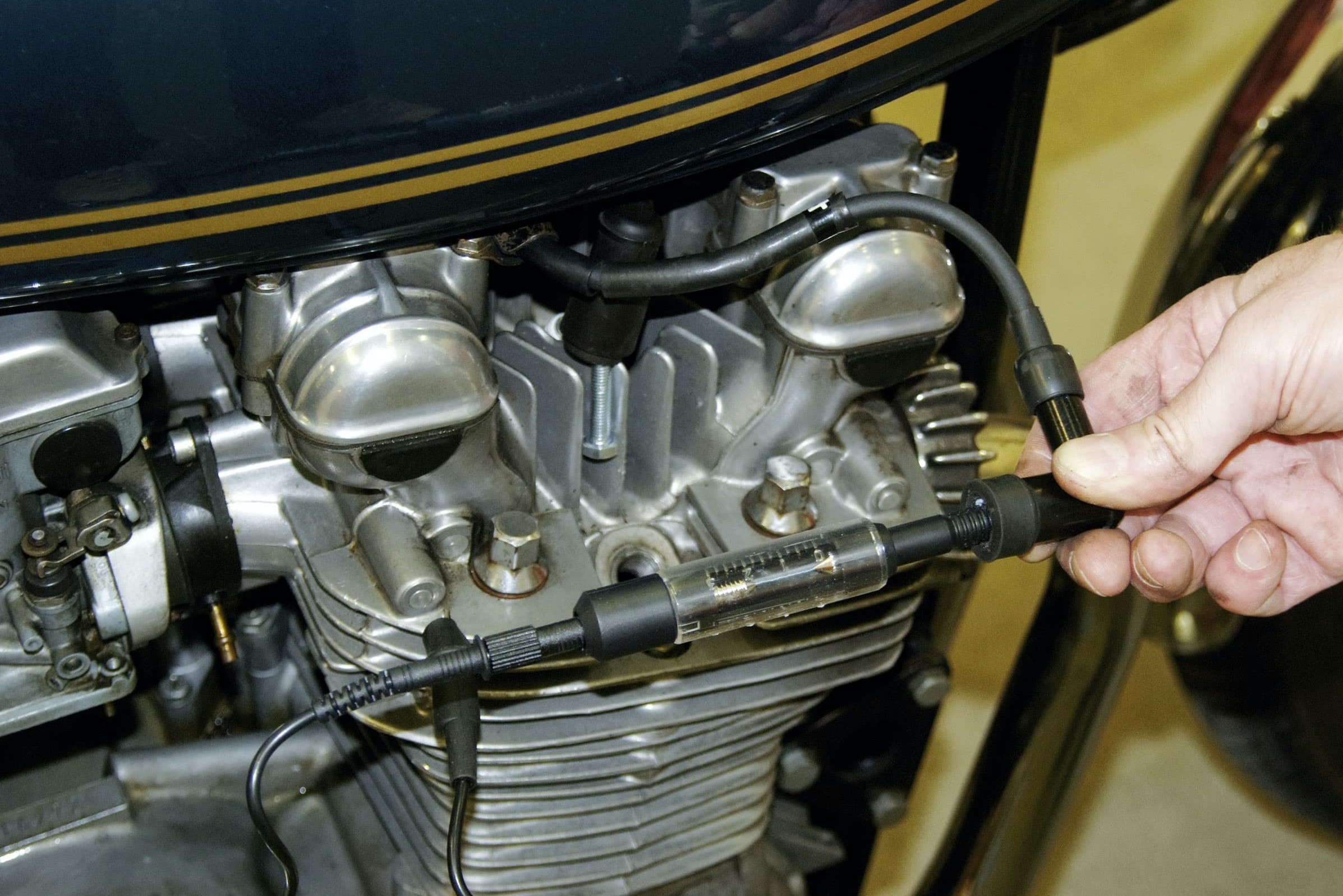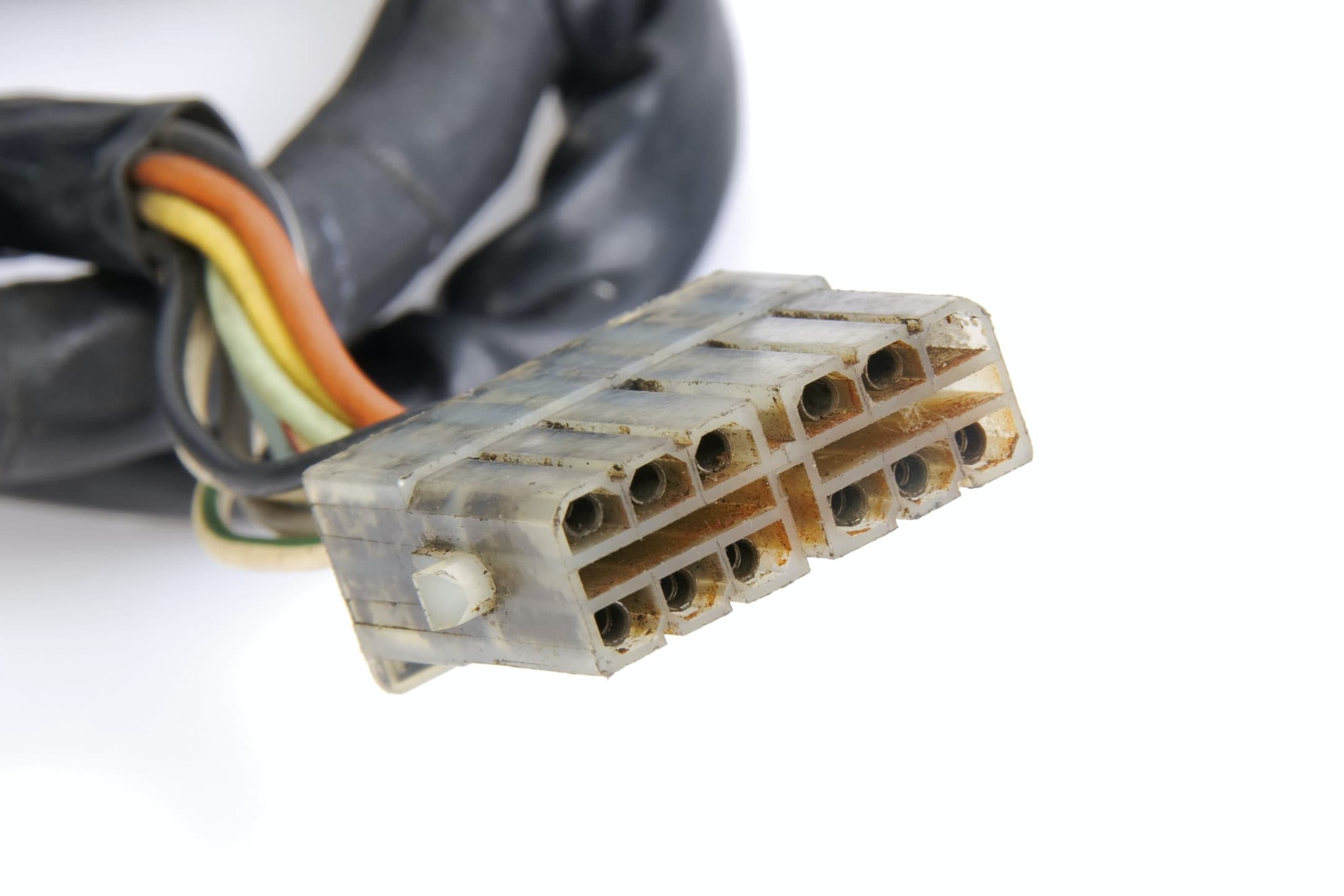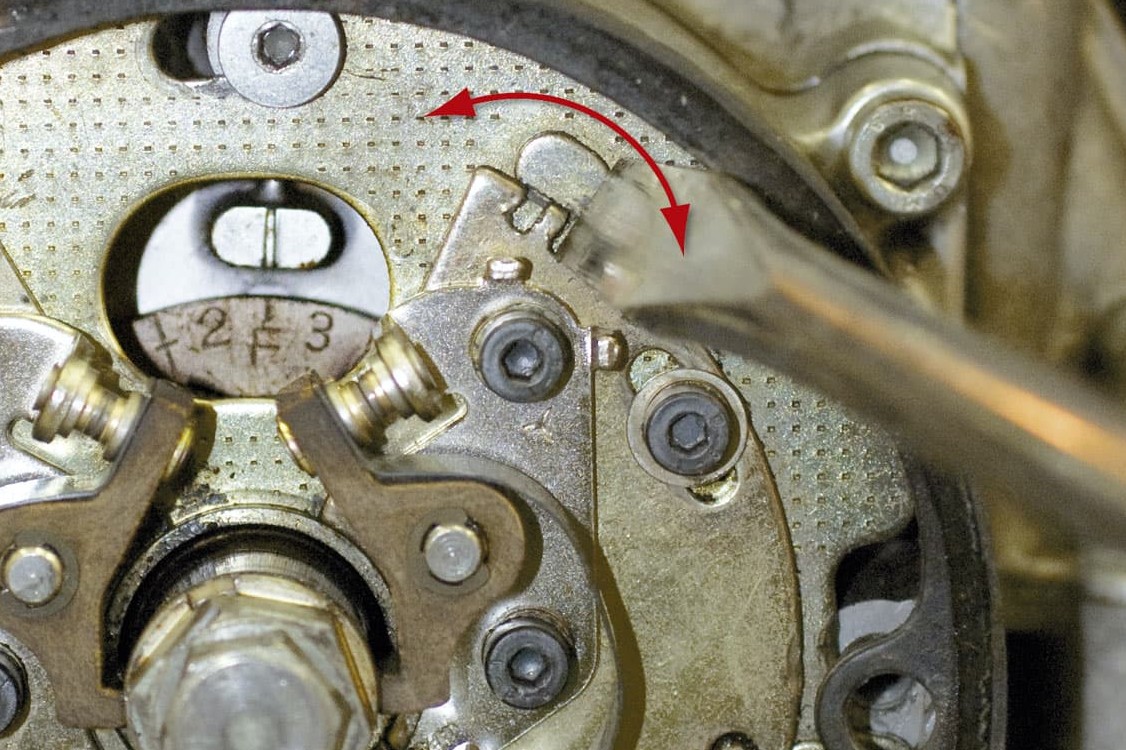Startup Tips for Your Motorcycle – Part 2
If you have carried out these "first aid measures" and your bike still won't start, your two-wheeled patient will need to undergo an in-depth diagnosis and intensive treatment.

Startup Tips Part 2 "Intensive Care"
Important: The checks and adjustments described here require a basic knowledge of vehicle mechanics. Otherwise, you should leave the repairs to your local motorcycle workshop!
Startup tips part 2 – now let's get started

Step 1: Spray Start-Fix into the airbox
01 – Spray Start-Fix into the airbox
If you haven't used your bike for a while and you're having problems starting it, spraying a little PROCYCLE Motor-Start-Fix into the intake manifold of the air filter may help.
This provides the rich air/fuel mixture required to start a cold engine. When using the electric starter, don't press it too long, as this draws heavily on the battery and will quickly drain it. If the cold start spray doesn't help, don't just carry on operating the starter motor – follow our troubleshooting guide.

Step 2: A rechargeable jump start booster battery will last for 3 – 4 starting attempts
02 – Check battery
Is the battery OK? If the starter motor has difficulty turning over, it's possible that the power supply is too weak to produce a strong spark. Try charging the battery first. If an acid battery begins to "bubble" after just a short period of charging, then it no longer has sufficient capacity and you need a new one. If you have a maintenance-free battery, you will have to rely on the indicator function of the charger or have the battery checked by an authorised motorcycle workshop. Another option would be to bypass the battery with a battery pack or jump start booster.

Step 3, Fig. 1: Test the ignition voltage
03 – Check the ignition
If a fully charged battery does not solve your problem, the next step is to check the ignition. If you own a sport motorcycle, this can be a real hassle, as it often involves removing the seat, tank, airbox and at least one side of the fairing. Attach each spark plug connector in turn to an ignition voltage tester and hold the tester against the engine block (earth).

Step 3, Fig. 2: Corroded plugs – bad contact
The voltage tester protects the ignition electronics against voltage peaks and may only be omitted on motorcycles with contact ignition (vintage motorcycles) – if you have one of these, you can hold the bare end of the spark plug cable around 5 mm away from the earth with long-nose pliers. Important: The ignition system produces high voltage! When you attempt to start the bike, the spark must jump across an air gap of at least 5 mm to earth – if it can do this it is strong enough for good ignition of the fuel-air mixture. If the spark is too weak, check the connections of the ignition coils. Defective connection? Spark plug cable too old?

Step 3, Fig. 3: Green corrosion on cable cores causes voltage drop
Is the entire wiring harness too old? (this would be indicated by greenish cable cores)

Step 3, Fig. 4: Adjust the points
In the case of conventional ignition systems (with contact breakers): Can you see strong sparks at the contact (then replace the condenser and points)?
Spark plug cables, condensers and spark plug connectors are all cheap spare parts, so you should replace them every now and then as a preventive measure. In the case of multi-cylinder engines, always make sure you assign the right spark plug cables to the right cylinders. Failure to do so will result in loud backfiring.
On four-cylinder engines, the first ignition coil generally supplies the 1st and 4th cylinders and the second supplies the 2nd and the 3rd cylinders:
Important: This requires resetting the ignition, so this is not a job for beginners!

Step 3, Fig. 5: The timing light must light up on the "F" marking
In the case of conventional ignition systems: Check the ignition timing using a timing light, which is placed between the positive of the contact and earth. Switch on the ignition and turn the crankshaft slowly and evenly with the wrench. When the "F" marking aligns with the marking on the housing, the lamp must light up – and precision is important here. If this is not the case, you will need to reset the ignition. To do this, first adjust the points gap with a feeler gauge (distance 0.3 – 0.4 mm). It is very important to work precisely to avoid damaging the engine (e.g. due to too much spark advance).
Another potential cause of a weak or non-existent spark is a defective ignition coil. If you suspect this to be the case, have a Bosch service centre or a motorbike workshop check the components.
Please note: Faulty ignition coils often go on strike when they heat up and work again after cooling down. In the case of electronic ignition systems (breakerless), failure to spark may also be due to a defective ignition box. In this case you will need to get your bike checked over by an authorised dealer for your make of motorbike (or a specialist workshop).

Step 4, Fig. 1: Spark plug white/dry – insufficient fuel supply!
04 – Check the appearance of the spark plugs
Remove the spark plugs, check for any signs of damage and rectify where possible.
Spark plug is very dry and a pale whitish colour: Ignition is working but no, or too little, fuel is reaching the cylinder. Check if sufficient fuel is reaching the carburettor. Is the fuel tap clogged? Is there a kink in the hose? Is a large air bubble blocking an external fuel filter? Is the choke working? It must be possible to reach the maximum position.
If the choke and fuel supply are working properly, you will need to remove the carburettor and dismantle and clean it, as it would appear to be clogged with resin or otherwise contaminated. Use air pressure and PROCYCLE Carburettor Cleaner for this task.
You can use a thin, soft wire to clean the channels, but this must not be used on the jets. Ultrasound is a particularly effective way of cleaning the carburettor. Ask your local dealer if they have an ultrasonic bath. If you have a multi-cylinder engine: Once you have replaced the cleaned carburettors, you may need to synchronise them again (you will find further details in the section Carburettor in our DIY tips.

Step 4, Fig. 2: Spark plug sooty black/wet – flooded!
Spark plug is sooty black and very wet: The cylinder is running too rich; it is probably flooded due to the fuel tap and/or float needle valve in the carburettor failing to close properly.
If the bike is not used for a prolonged period, this may even allow fuel to leak into the engine oil. If you suspect this is the case, it is essential to change the oil! The float needle valve is located in the float chamber of the carburettor. You can check with a finger nail: if you can feel a step (recessed "ring"), it needs replacing.

Step 4, Fig. 3: Worn float needle valve – replace!
Check the fuel tap for leakage by removing the hose overnight and leaving a container underneath. You can either clean the soiled spark plugs using a brass wire brush and check that the gap is the standard 0.7 – 0.8 mm or, better still, replace them with new ones.

Step 4, Fig. 4: Spark plug sooty black/dry – carburettor running too rich!
Spark plug sooty black but not unduly wet: The cylinder is running too rich. Clean or change the spark plug.
If you often have problems starting up due to sooty black spark plugs, check the carburettor setting. Either the carburettor is faulty or the air filter is clogged.
If you frequently ride at low speeds in city traffic and have to start the engine repeatedly, it may be better to use iridium spark plugs, as these have significantly better self-cleaning properties. Iridium spark plugs are also ideal for vintage motorcycles because they deliver a strong spark even at a lower voltage. However, they should not be used to "gloss over" other defects!

Step 4, Fig. 5: Ideally, spark plug should be light brown – like this!
Spark plug light brown and dry: If the cylinder is performing well, the spark plug should be a grey/light-brown colour and dry. However, because the choke causes the engine to run rich, you're not likely to find a light brown spark plug after trying to start your bike.

Step 4, Fig. 6: Spark plug brown/wet – no ignition spark!
Spark plug brown and wet: If the spark plug is a normal brownish colour but damp from unburned fuel, then it has not sparked.
Try replacing the spark plug. If that doesn't help, go back to step 3 and check the ignition of the respective cylinder. For more information see Basic knowledge of park plugs in our DIY tips.
Our recommendation
The Louis Technical Centre
If you have a technical question about your motorbike, please contact our Technical Centre, where they have endless experience, reference books and contacts.
Please note!
These tips for DIY mechanics contain general recommendations that may not apply to all vehicles or all individual components. As local conditions may vary considerably, we are unable to guarantee the correctness of information in these tips for DIY mechanics.
Thank you for your understanding.



